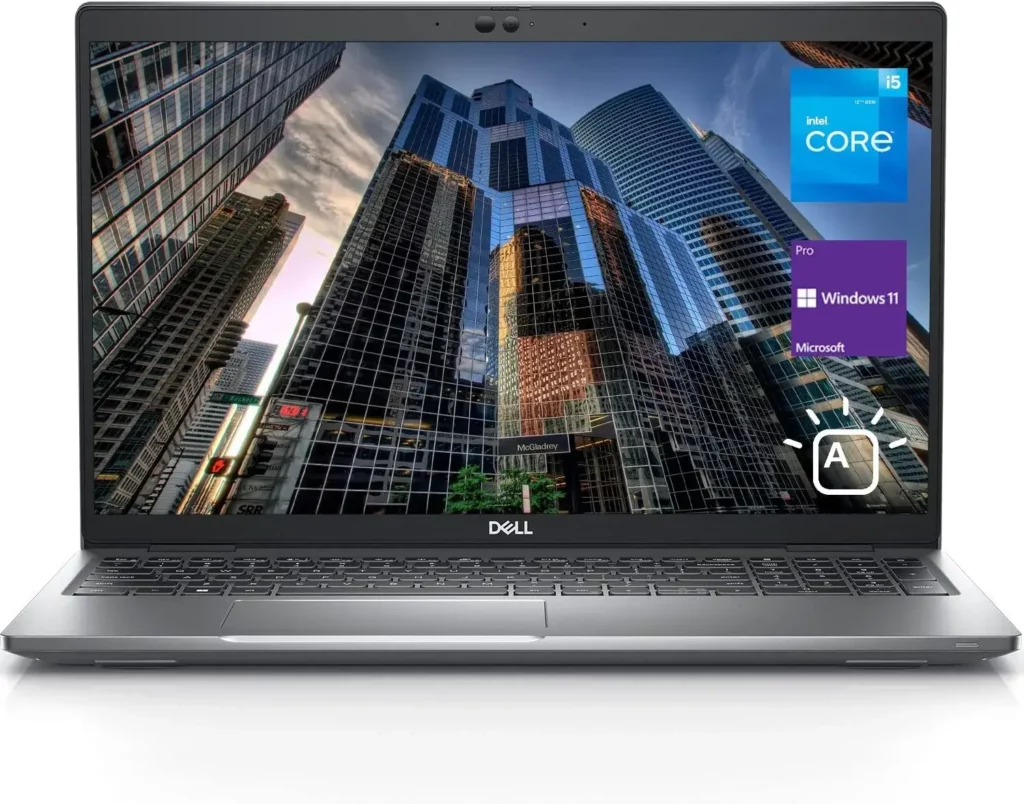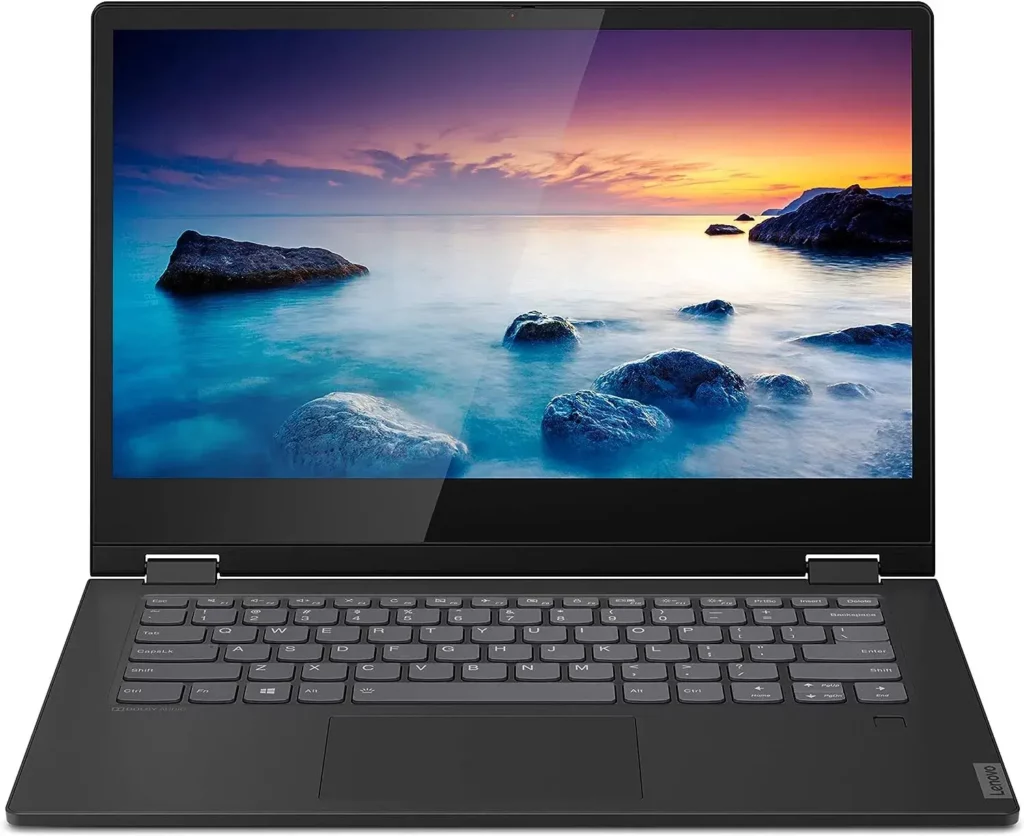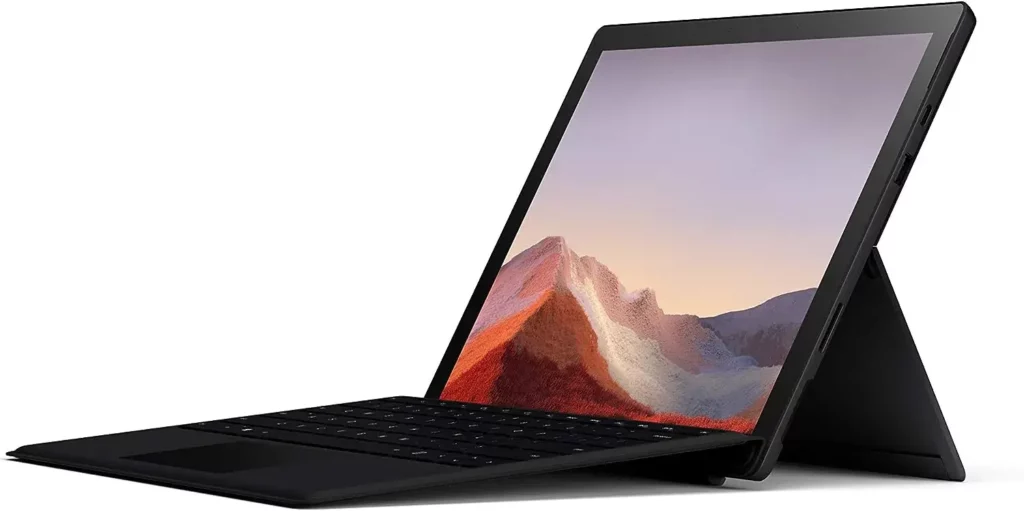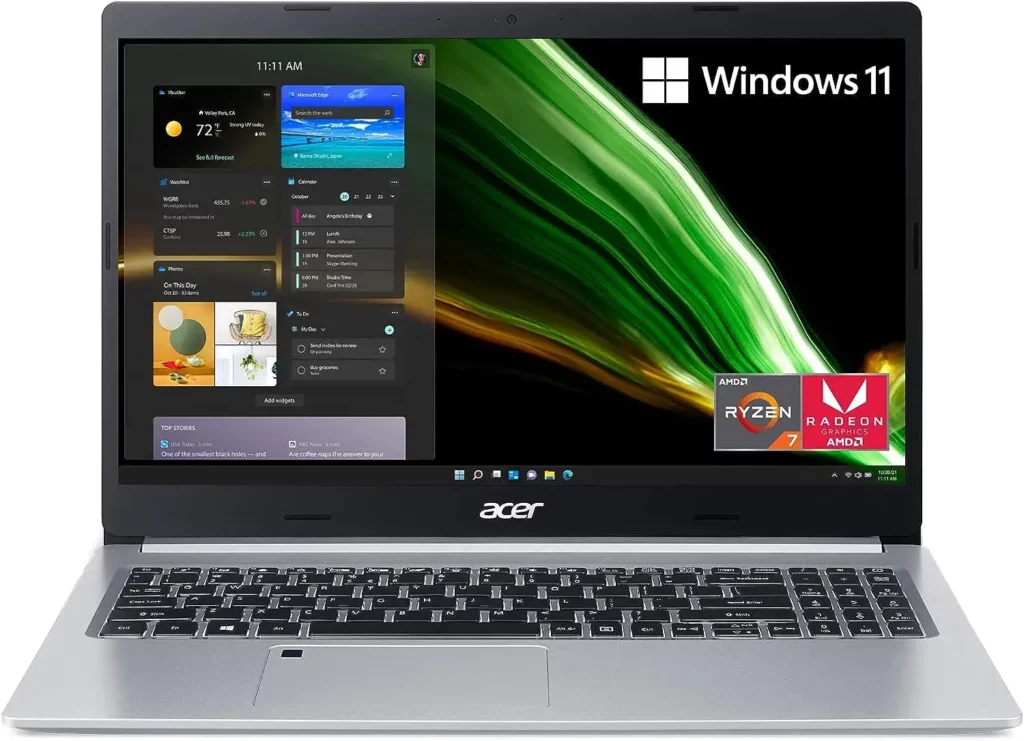Online teaching has become an essential part of education. Teachers now rely on computers for lessons, classes, and grading, making a reliable laptop a necessity.
With various options in the market, selecting the right laptop for online teaching is vital. A dependable laptop should offer seamless online communication to enhance the teaching and learning experience.
When choosing a laptop for online teaching, you should keep these key features in mind. They ensure your laptop is well-suited for online education.
Our Picks for You!
Considering the required features for Online Teachers we have carefully chosen the five Best Laptops for Online Teachers.
Tabular Summary
Here is the tabular summary of all the Laptops for a quick comparison!
| Laptop | Display Size (Inches) | Processor | RAM (GB) | Storage (GB SSD) | Graphics | Operating System | Battery Life (hours) |
|---|---|---|---|---|---|---|---|
| HP Pavilion 14 | 14 | Intel Core i5 | 16 | 512 | Intel Iris Xe Graphics | Windows 11 | 9 |
| Dell Latitude 5530 | 15.6 | Intel Core i5 | 16 | 512 | Intel UHD Graphics | Windows 11 | 9 |
| Lenovo Flex 14 | 14 | AMD Ryzen 5 4600H | 12 | 256 NVMe | AMD Radeon Vega 8 | Windows 10 | 10 |
| Microsoft Surface Pro 7 | 12.3 | Intel Core i5 | 8 | 256 | Intel Iris Plus Graphics | Windows 10 | 10.5 |
| Acer Aspire 5 | 15.6 | AMD Ryzen 7 | 8 | 256 | AMD Radeon RX Vega 10 | Windows | 10 |
Detailed Review
Highlights:
- Processor Intel Core i5-1135G7 with graphics Intel Iris Xe
- SSD storage with 512GB of space
- 16GB DDR4 SDRAM
- 14-inch Full HD touchscreen (1920 x 1080), you can multitask with ease
- Windows 11 is a modern operating system
- Battery life of up to 9 hours
- USB-C, USB-A, HDMI, and a headphone jack provide versatile connectivity
- WiFi and Bluetooth connectivity provide wireless convenience
- Webcam built-in for online meetings
- Portable and durable
Review
The HP Pavilion 14 is ideal for online teachers due to its many capabilities. The Intel Core i5-1135G7 processor in the laptop has a turbo boost speed of 4.2GHz. It performs effectively for online schooling and simple content creation. It has a long battery life of up to 9 hours ensuring uninterrupted education.
A 512GB SSD provides quick and stable storage for educational data and software. The large 16GB DDR4 SDRAM capacity allows extensive multitasking. A standout feature is its 14-inch Full HD touchscreen display, boasting a sharp 1920 x 1080 resolution. This enhances presentations and video conferences, making them more engaging and enjoyable.
With its new and user-friendly interface, Windows 11 streamlines the user experience. The laptop’s connectivity options include USB-C, USB-A, HDMI, and a headphone jack, making it useful for teaching. WiFi and Bluetooth allow devices to connect and communicate with one another. The built-in webcam is ideal for online meetings and virtual classes. The laptop is compact, increasing its portability.
Finally, the HP Pavilion 14 excels in online education because of its powerful performance, stunning display, and adaptable networking. Its attractive design and portability make it one of the best laptops for online teachers, increasing productivity and flexibility.
Highlights:
- 5.6-inch Full HD (1920 x 1080 pixel) display
- Intel Core i5 processor provides adequate performance
- 16 GB of 2400 MHz DDR4 RAM for fluid multitasking.
- 512 GB of SSD storage for ample performance and capacity
- Intel Iris Xe Graphics for improved graphics
- 9-hours of impressive battery life
- Rapid wireless 802.11ax connectivity
- Four USB 3.0 interfaces for flexible device connectivity
- Windows 11 Professional for enhanced efficiency
- Compact and portable
- 720-pixel rear webcam for productive online conferences
Review
The Dell Latitude 5530 has a 15.6-inch display with a Full HD resolution of 1920 x 1080 pixels, providing a vivid and colorful screen for online teaching. It has an Intel Core i5 which is a capable processor suitable for routine tasks and online instruction.
This laptop’s 16 GB of DDR4 RAM operating at 2400 MHz ensures fluid multitasking and responsiveness, which is essential for teachers managing multiple instructional resources and applications. The 512 GB SSD storage provides sufficient capacity and speed for the storage of instructional materials and data.
The Intel Iris Xe Graphics enhance the visual experience, making multimedia content and presentations suitable. It has an impressive battery life of up to 9 hours. The laptop’s 802.11ax wireless connectivity enables quick and reliable online collaboration and communication. This laptop is incredibly portable, weighing only 3.5 pounds, making it an ideal alternative for educators who need to travel between classrooms or teaching venues.
It is adaptable to the requirements of instructors because its four USB 3.0 ports offer a variety of options for connecting external devices. It operates on Windows 11 Pro and offers enhanced productivity features and a contemporary user interface. The Dell Latitude 5530 is a dependable instrument for online educators because it combines performance, storage, and connectivity.
Highlights:
- SSD storage with 512GB of speed
- 16GB DDR4 SDRAM
- Vivid 14-inch Full HD touchscreen (1920 x 1080)
- Processor Intel Core i5-1135G7 with graphics Intel Iris Xe
- Windows 11 is a modern operating system
- Battery life of up to 9 hours is impressive
- USB-C, USB-A, HDMI, and a headphone jack provide versatile connectivity
- WiFi and Bluetooth connectivity provide wireless convenience
- Webcam built-in for online meetings
- Elegant warm gold design
- Portable and lightweight
Review
The Lenovo Flex 14 2-in-1 Convertible Laptop features a 14-inch FHD touchscreen display, making it a responsive and interactive teaching aid for educators. Powered by an AMD Ryzen 5 3500U processor and 12GB of DDR4 RAM, this computer ensures efficient multitasking and performance, making it ideal for online teaching duties.
The 256GB NVMe SSD storage provides quick data access and ample space for storing instructional materials and files. This laptop’s AMD Radeon Vega 8 graphics coprocessor provides crisp and detailed visuals for educational materials and presentations. With an average battery life of 10 hours, educators are able to work and instruct without requiring frequent recharging.
It operates on Windows 10, providing educators with a familiar and user-friendly interface. It is a portable and fashionable option for educators on the go. The laptop’s digital pen increases its utility for duties such as annotating notes and developing interactive lessons. Bluetooth wireless connectivity and two USB 3.0 interfaces for flexible device connections are provided. The Lenovo Flex 14 is a valuable instrument for online teaching because it combines performance, portability, and versatility.
Highlights:
- 12.3-inch high-resolution (2736 x 1800) display
- Intel Core i5 processor
- 8 GB LPDDR4 RAM for enhanced online teaching mode
- 256 GB SSD for rapid access to educational materials
- Integrated Intel Iris Plus Graphics for crystal-clear images
- Windows 10 Home for diverse software compatibility
- Extremely lightweight design enhances portability
- Exceptional battery life of 10.5 hours for extended use
- 5-megapixel rear webcam for virtual conferences
- Bluetooth wireless connectivity
Review
The Microsoft Surface Pro is a portable device with a 12.3-inch display and a high resolution of 2736×1800 pixels. While the Intel Core i5 processor and 8 GB LPDDR4 RAM provide adequate performance for online teaching and multitasking. With a 256 GB SSD, educators can quickly access their instructional materials, and the integrated Intel Iris Plus Graphics ensures that educational content has crisp visuals.
It operates on Windows 10 Home, providing teachers with a familiar and user-friendly operating system. Its lightweight design, weighing just 1.7 pounds, makes it exceedingly portable, and suitable for teachers on the move. With an average battery life of 10.5 hours, it allows teachers to instruct and work for extended periods without requiring frequent recharging.
It features a 5-megapixel rear webcam, which can be useful for online meetings and remote instruction. It is equipped with Bluetooth wireless connectivity, offering convenience in teaching and adaptability. The Microsoft Surface Pro is a versatile option for online teachers because it combines portability, a high-resolution display, and dependable performance.
Highlights:
- 15.6-inch Full HD display (1920 x 1080 pixels)
- AMD Ryzen 7 4 GHz for multitasking
- 8 GB DDR4 RAM.
- 256 GB SSD for fast data access
- AMD Radeon RX Vega 10 for enhanced graphics
- Windows 11 Home for user-friendly interference
- Compatible with Bluetooth and 802.11ax wireless networks
- USB 2.0 and three USB 3.0 ports
- Excellent 10-hour battery life for teaching for long hours
- Portable and compact design
Review
The Acer Aspire 5 laptop has a 15.6-inch display with a Full HD resolution of 1920 x 1080 pixels, providing a clear and detailed visual experience for online teaching. Powered by a 4 GHz AMD Ryzen 7 processor and outfitted with 8 GB of DDR4 RAM, it provides efficient multitasking capabilities, making it ideal for educators who manage multiple instructional resources.
This laptop features a 256 GB SSD for rapid data access and ample storage for course materials and files. The integrated AMD Radeon RX Vega 10 graphics coprocessor improves visual fidelity, making the system suitable for presentations and educational content. It operates on the Windows Operating System, providing teachers with a familiar interface.
This laptop features Bluetooth and 802.11ax wireless connectivity, ensuring quick and reliable connections. It provides a variety of USB interfaces, including one USB 2.0 port and three USB 3.0 ports, to support various peripheral devices. With an average battery life of 10 hours, teachers can work without recharging their devices frequently.
It is a portable and visually appealing laptop as it weighs just 3.99 pounds and has a streamlined silver design. It is portable due to its dimensions of 14.31 x 9.86 x 0.71 inches. The Acer A515-46-R3CZ is a valuable instrument for online teachers because it combines performance, connectivity, and portability.
Conclusion
We’ve examined a diverse variety of options from top brands like HP, Dell, Lenovo, Microsoft, and Acer. Each laptop has its distinct advantages, allowing it to meet the diverse requirements of online teachers in the digital age.
Laptops from HP and Dell offer dependable performance, ample storage, and high-quality graphics, making them dependable options for educators requiring productivity. Lenovo’s 2-in-1 design with touchscreen capabilities offers versatility, whereas Microsoft’s compact and lightweight offering stands out as an ultraportable alternative. Acer integrates performance and connectivity, making it a trustworthy option for educators who require a balance of power and portability.
The optimal laptop for online teaching ultimately depends on your individual preferences and specific teaching requirements. We hope that our specially curated list will help you in making the best choice. Whether it be performance, portability, or versatility, these laptops offer options to accommodate a variety of teaching styles and requirements in the ever-changing online education landscape. Also, see our article Best Laptops for Professors (Educators).
Online Teaching Software and Platforms
Teaching online typically requires a combination of software tools and platforms to effectively deliver content, engage with students, and manage various aspects of the teaching process. Here is a list of software commonly used by online educators:
- Learning Management System (LMS): LMS platforms like Moodle, Canvas, Blackboard, or Google Classroom are central for managing course content, assignments, quizzes, discussions, and grading.
- Video Conferencing Tools: Tools like Zoom, Microsoft Teams, Google Meet, or WebEx enable live virtual classes, meetings, and interactive sessions with students.
- Screen Recording and Video Editing Software: Software like OBS Studio, Camtasia, or ScreenFlow is useful for recording lectures, creating video content, and editing videos for online courses.
- Presentation Software: Microsoft PowerPoint, Google Slides, or Prezi can be used to create and deliver presentations to enhance online lectures.
- Document Sharing and Collaboration: Google Docs, Microsoft Office 365 (Word, Excel, PowerPoint), or cloud storage services like Dropbox can be used for sharing course materials and collaborating on documents.
- Online Quizzing and Assessment Tools: Tools like Quizlet, Kahoot, or platforms integrated with the LMS can be used for creating and administering quizzes and assessments.
- Screencasting Tools: Screencasting software like Screencast-O-Matic or Loom allows you to record your screen and voice to demonstrate software, applications, or concepts.
- Communication and Messaging: Email services, instant messaging platforms, or tools like Slack can be used for communication and staying in touch with students.
- Interactive Whiteboard Software: Tools like Microsoft Whiteboard or digital whiteboards within video conferencing platforms allow for real-time drawing and annotation during virtual lectures.
- Webinar Platforms: Platforms like GoToWebinar or Adobe Connect are suitable for hosting webinars or virtual workshops.
- Student Engagement and Polling Tools: Tools like Poll Everywhere or Mentimeter can be used to engage students through live polls and surveys.
- Plagiarism Detection Software: Software like Turnitin helps educators check for plagiarism in student assignments.
- Online Assessment and Grading: Some LMS systems have built-in tools for creating, distributing, and grading assignments and assessments.
- Online Survey Tools: Tools like SurveyMonkey or Google Forms can be used for collecting feedback from students.
- Analytics and Reporting Tools: LMS platforms often include analytics features for tracking student progress, engagement, and performance.
- Virtual Reality (VR) or Augmented Reality (AR) Software: Depending on the subject matter, educators may use VR or AR applications to create immersive learning experiences.
- Access and Accommodation Tools: Software for accessibility, such as screen readers or closed captioning tools, ensures that course content is accessible to all students.
- Online Tutoring and Collaboration Platforms: Platforms like Tutor.com or Collaborate Ultra (integrated with some LMS systems) can facilitate one-on-one or group tutoring sessions.
The specific software tools you need may vary depending on your teaching goals, subject matter, and the preferences of your institution. Additionally, many educators use a combination of these tools to create a comprehensive online teaching environment.
Laptop Buying Guide 2023: Best Laptops for Online Teachers
Processor: Look for a laptop with a strong processor like Intel Core i5 or i7, or AMD Ryzen. A faster processor helps with multitasking, video calls, and running software smoothly.
RAM: Go for at least 8GB of RAM, but it’s better to have 16GB or more. This lets you run many apps at once without your laptop getting sluggish.
Storage: Get a laptop with an SSD for faster access and boot times. Aim for a 256GB SSD or bigger to store all your stuff.
Graphics: For online teaching, integrated graphics are enough. But if you want to do video editing or use graphics-intensive apps, you’ll need a dedicated GPU.
Display: Look for a laptop with Full HD (1920×1080) or higher resolution. Large screens, around 14 to 15.6 inches, give you more space for your teaching materials.
Battery Life: Make sure the laptop can last at least 8 hours to get through your teaching sessions without needing frequent charging.
Webcam and Mic: For online classes, you need a good webcam and a microphone. Go for high-definition webcams and noise-canceling microphones for clear communication.
Connectivity Options: Ensure your laptop has enough USB ports, including USB-C ports. Also, you’ll need HDMI and an audio port to connect external displays and audio gear.
Wireless Connectivity: Wi-Fi (preferably Wi-Fi 6) and Bluetooth support are required for online communication and device connectivity.
Operating System: Pick an operating system you’re comfortable with, like Windows, macOS, or Linux. Make sure it supports the apps you need for online teaching.
Budget: Decide your budget and choose features accordingly. There are affordable laptops that work well for online teaching, while high-end ones offer top performance.






